Key takeaways:
- Aerial shooting transforms perspectives by providing unique angles and enhancing visual storytelling, crucial for industries like urban planning and environmental monitoring.
- Planning is essential for successful aerial shooting, involving location scouting, understanding regulations, and having a clear narrative in mind for composition.
- Technical challenges such as wind conditions, battery issues, and finding the right angle require thorough preparation and creativity for capturing compelling images.
- Emotional connection to the landscape and timing with light are key aspects that enhance the shooting experience and the storytelling quality of aerial photography.
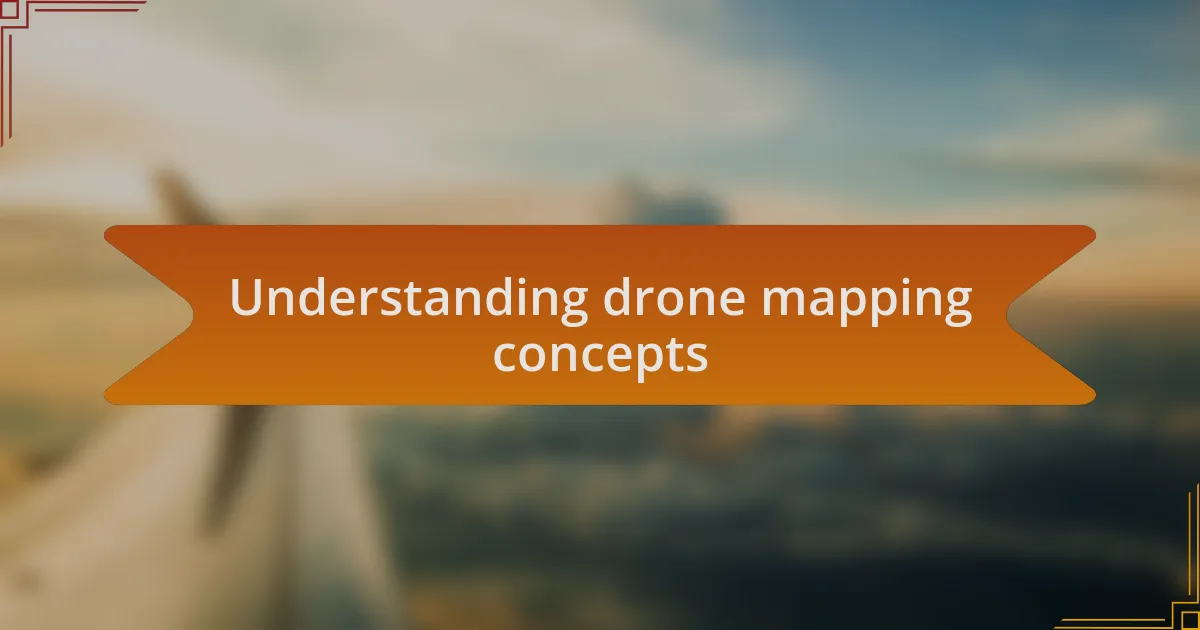
Understanding drone mapping concepts
When I first delved into drone mapping concepts, I had no idea how complex yet rewarding it could be. The foundational idea revolves around collecting precise data from the air, creating detailed maps and 3D models that have real-world applications. I remember standing on a cliff in Zanzibar, watching my drone capture images of the lush landscapes below, and I thought, “This isn’t just photography; this is about transforming perspective.”
It’s fascinating to realize how drones can integrate GPS data with aerial images, allowing for high accuracy in mapping. I often think about how this technology can revolutionize industries—from agriculture to construction—by providing precise measurements and insights. Have you ever considered how much easier it is to visualize a project when you can see it from above? This perspective helps not just in planning but also in making informed decisions quickly and effectively.
As I learned more about the techniques behind this technology, I discovered terms like photogrammetry and georeferencing. At first, they sounded daunting, but they are essentially the processes that convert those aerial images into valuable spatial data. I remember the lightbulb moment when I grasped that every image collected by the drone is a puzzle piece, contributing to a bigger picture, helping me appreciate the art and science of drone mapping even more.
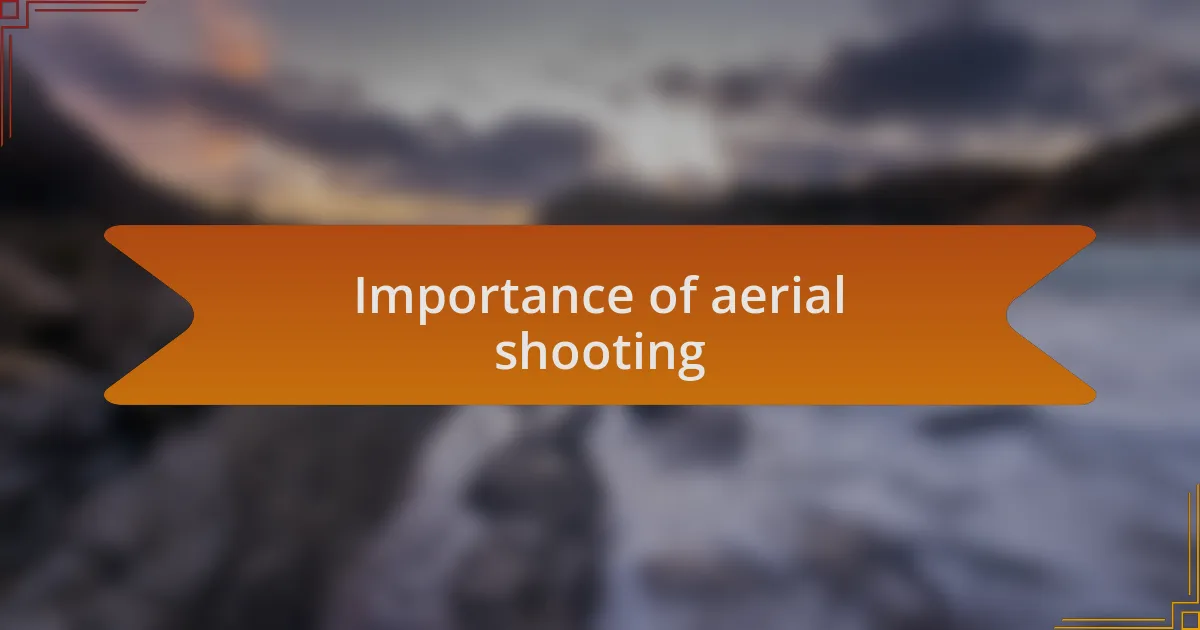
Importance of aerial shooting
Aerial shooting plays a crucial role in capturing landscapes from unique angles that are often impossible to achieve from the ground. I remember the first time I flew my drone over the pristine beaches of Zanzibar; I was struck by how a simple shift in perspective could transform a familiar scene into something extraordinary. This ability to showcase beauty and details from above not only enhances visual storytelling but also aids in better analysis and understanding of geographical features.
Moreover, the data gathered from aerial photography is invaluable for various industries, including environmental monitoring and urban planning. While working on a project involving coastal erosion assessment, I realized how the images provided critical insights that ground-level observations simply couldn’t match. Have you ever thought about how much easier it is to detect patterns from the sky? The clarity and detail allow us to make informed decisions that can significantly impact planning and resource management, which is something I deeply appreciate about this technology.
Lastly, aerial shooting fosters creativity and innovation in ways I’ve only begun to explore. For instance, I often experiment with different heights and angles, crafting compositions that express the essence of the landscape. This newfound freedom has not only made my work more fulfilling but also ignited a passion within me to continuously improve and discover new techniques. What have you discovered about your creativity while capturing those breathtaking aerial views? The possibilities are endless when you embrace this medium.
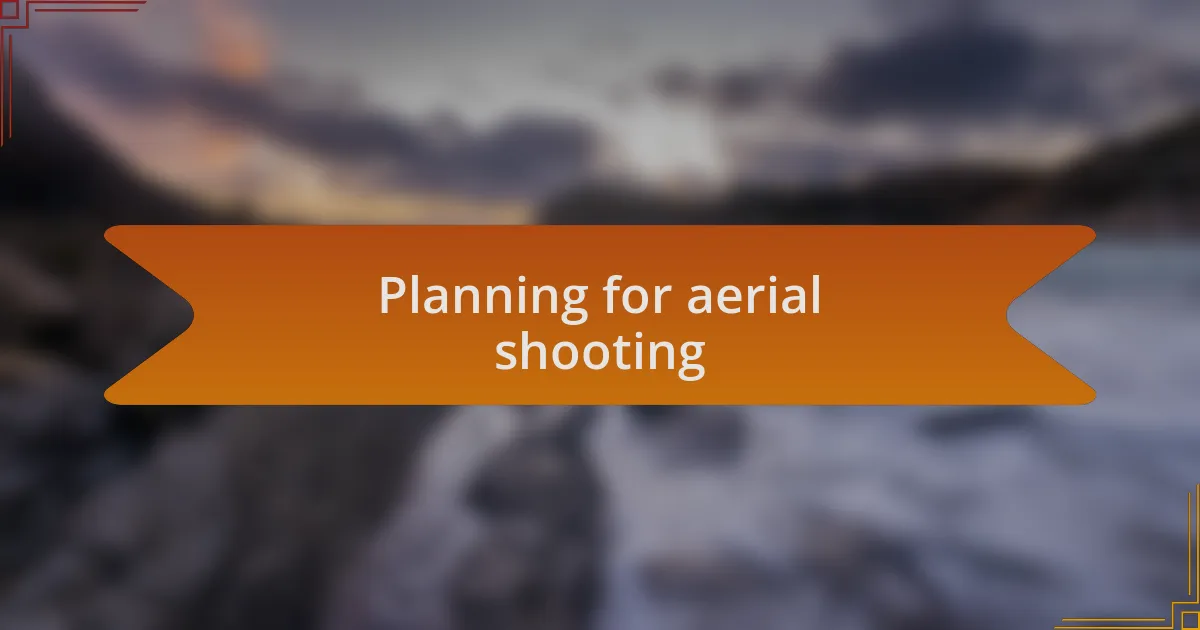
Planning for aerial shooting
Planning for aerial shooting requires careful consideration to ensure a successful outcome. I often begin by scouting the location, taking into account the time of day and lighting conditions. There’s something magical about that golden hour when the sun casts a warm glow over everything; it really can elevate your shots. Have you ever considered how different lighting can completely change the mood of a photograph?
Next, I always make it a point to review the local regulations regarding drone flights. Understanding airspace restrictions can save you from potentially hefty fines or damaged gear. I once overlooked this aspect and found myself rushing to land my drone because I was encroaching on a no-fly zone—definitely not the most relaxing experience! Have you ever been caught off guard by regulations in your aerial shoots?
Another crucial aspect of planning is thinking about the narrative I want to tell through my shots. I often jot down a shot list to keep myself focused, making sure to include various angles and perspectives. I remember an assignment where I captured a bustling market in Zanzibar from different heights, which added layers to the story I was trying to convey. What story are you hoping to tell with your aerial photography? Engaging with these questions can lead to truly compelling images.
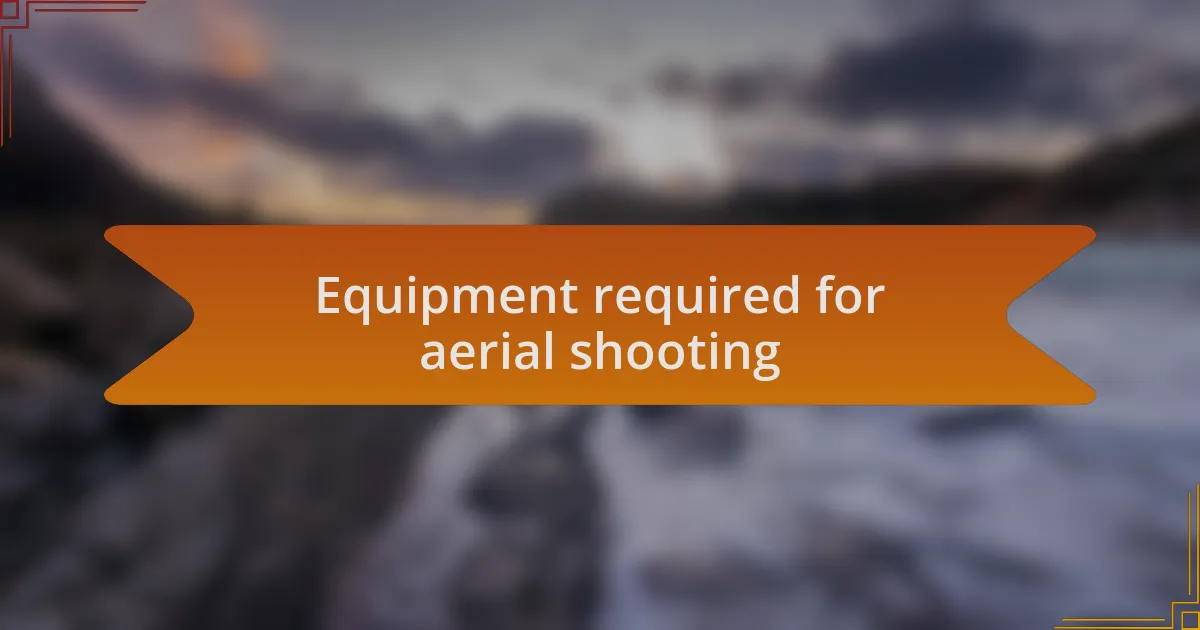
Equipment required for aerial shooting
When it comes to aerial shooting, equipment selection is vital. A high-quality drone is my primary tool; I’ve had great experiences with models that offer robust flight stability and high-resolution cameras. I remember the first time I flew a drone with a 4K camera. The clarity of those images was simply breathtaking, reminding me how crucial good gear is.
Additionally, I always pack spare batteries. On one shoot, I lost precious daylight because my drone’s battery failed sooner than expected. There’s nothing more frustrating than watching the sun dip below the horizon while knowing you could have captured stunning shots if you were better prepared. Have you ever been caught short, wishing you had just one more battery?
Don’t forget about filters for your camera lens. I often use ND filters to manage exposure on bright days, which really helps soften the harsh light. This tiny addition can make a world of difference; I once captured vibrant, dynamic colors in a Zanzibar sunset that were only possible because of that filter. It’s amazing how a small piece of equipment can elevate your entire shot, isn’t it?

Techniques for effective shots
When I’m framing my aerial shots, I always think about the rule of thirds. By positioning the subject off-center, I create more visually stimulating compositions. I can recall one serene morning in Zanzibar, where I captured the coastline with a fishing boat perfectly placed in the frame, making the shot not just a picture, but a story.
Lighting is another critical factor I focus on. The golden hour, just after sunrise or before sunset, brings a warm glow that transforms ordinary scenes into magical vistas. During one early shoot, I was lucky enough to catch the sun rising over the Indian Ocean, where the water sparkled like diamonds. It was mesmerizing, and I always strive to recapture that kind of enchantment.
Finally, I emphasize smooth movements while flying. Slow and steady pans not only create a professional look but also preserve the viewer’s sense of being in the moment. Once, I executed a smooth sweep over a bustling market, and the response was overwhelming. Have you ever felt that rush of capturing something so vibrant that it brings you right back to that scene? It’s a thrill that makes every effort worthwhile.
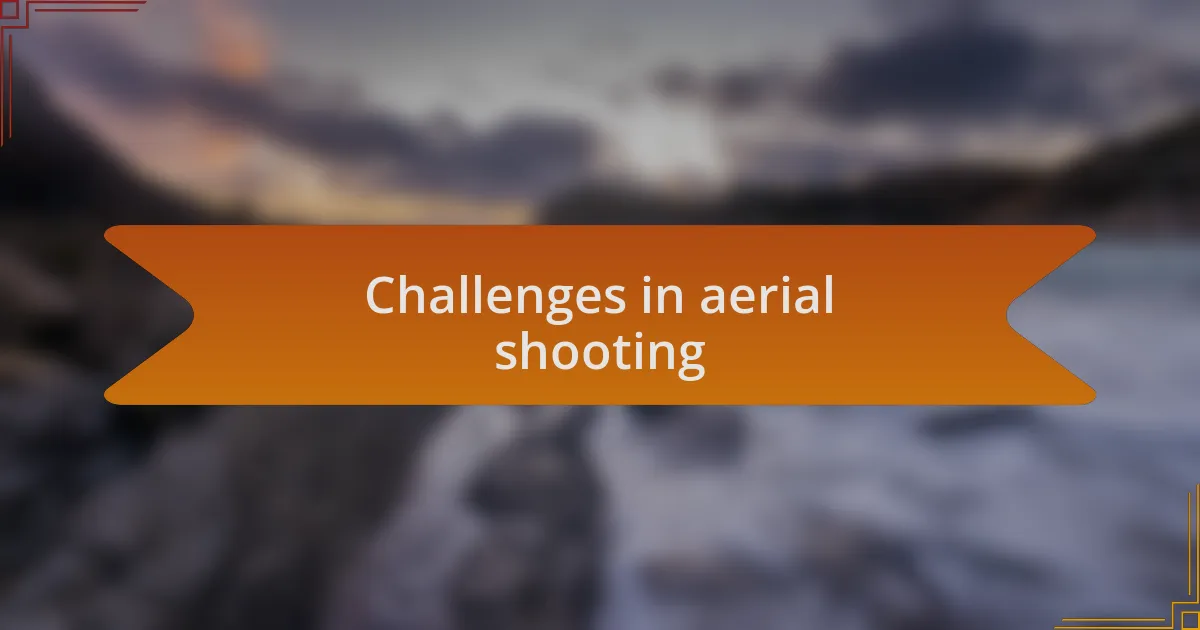
Challenges in aerial shooting
Aerial shooting presents unique challenges that can catch even the most seasoned drone pilots off guard. For instance, wind conditions can drastically affect stability. I remember one frustrating afternoon trying to capture Zanzibar’s stunning cliffs, only to have gusts shift my drone unpredictably. It was a stark reminder of how nature can be both beautiful and unpredictable, forcing me to rethink my plans on the spot.
Technical issues are another hurdle that often arises. Once, during a shoot, my drone’s battery warning flickered at the worst possible time. I was hovering over a picturesque bay, poised to capture the perfect moment when I had to choose between risking a crash or bringing the shot to an early end. Have you ever found yourself in a situation where technology seems to betray your vision? It’s moments like these that remind me of the importance of thorough pre-flight checks.
Then there’s the challenge of finding the right angle. I’ve spent hours circling a location, searching for the perfect vantage point to highlight the beauty of Zanzibar’s landscapes. The task can feel daunting, particularly when time is running out. But isn’t that the essence of creativity? The persistence in capturing that elusive ‘magic’ shot makes every successful capture feel like a treasure uncovered.
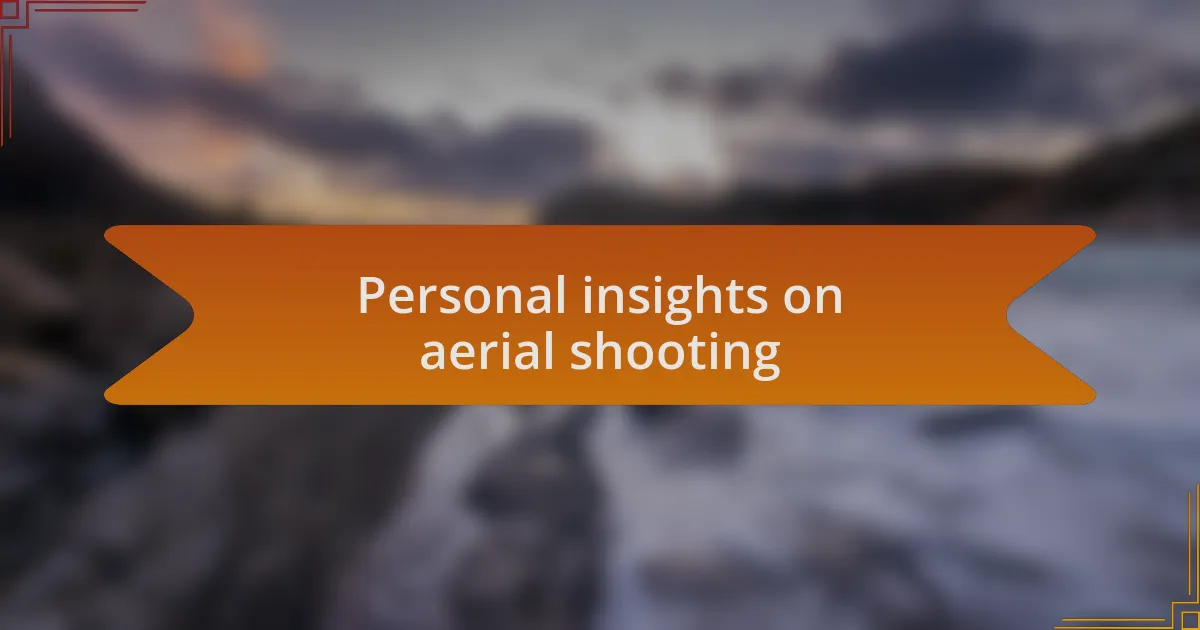
Personal insights on aerial shooting
When I’m aerial shooting, I focus intensely on composition. It’s fascinating how a slight shift in the drone’s position can transform the entire frame. One time, while gliding over the emerald waters of the Indian Ocean, I noticed how the coral reefs created mesmerizing patterns. Adjusting my angle just a tad revealed a breathtaking design that I hadn’t initially seen. Isn’t it amazing how the right perspective can completely change how we view the world?
I often find that my emotional connection to the landscape enhances my shooting experience. During one particular session, hovering above the vibrant markets of Stone Town, I felt an overwhelming sense of life pulsating below. The hustle and bustle of the crowds and the colors of the stalls filled me with inspiration. It reminded me that aerial photography isn’t just about capturing images; it’s about conveying the essence of a place. Have you ever felt that rush when you capture a scene that truly speaks to you? That’s what keeps me coming back for more.
Another aspect I pay close attention to is light and its changing dynamics. Early mornings in Zanzibar offer a soft, golden glow that’s hard to replicate. I recall a shoot at sunrise where the light danced on the water’s surface, creating shimmering reflections. Timing my shots to catch this fleeting perfection made all the difference. It’s in those moments that I understand how light can be a powerful tool, revealing details and emotions that might otherwise remain hidden.